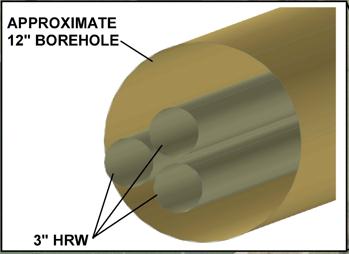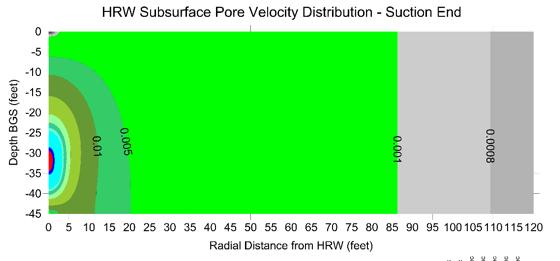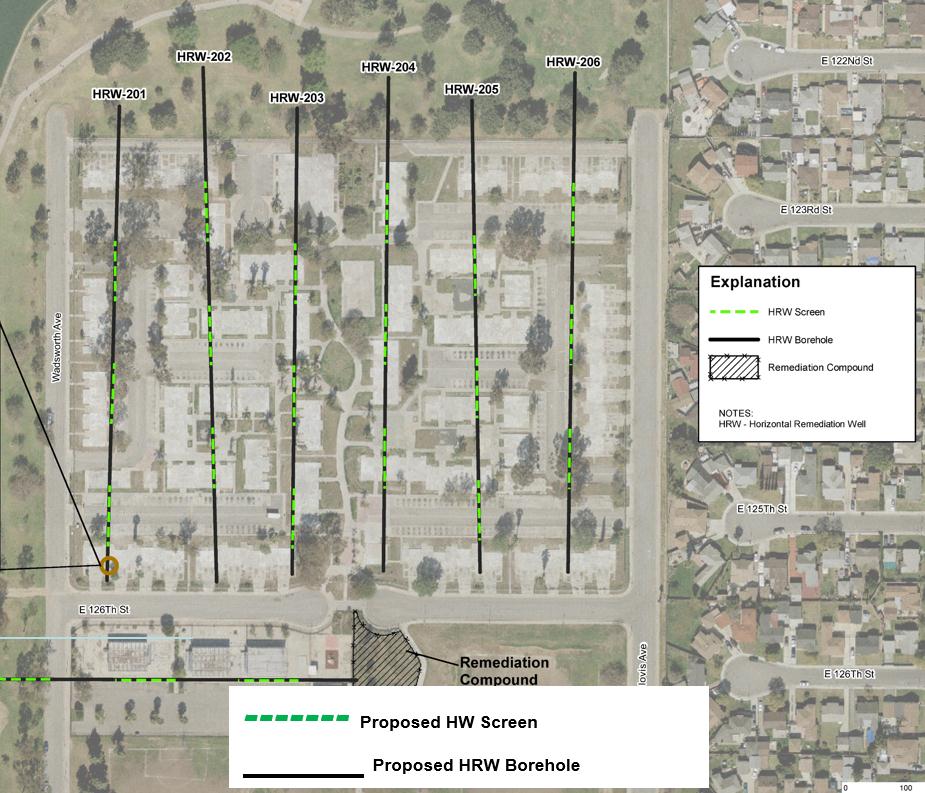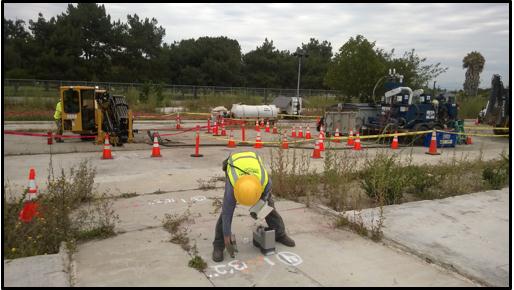Successful horizontal soil vapor extraction (SVE) pilot study leads to full-scale implementation of horizontal multiport SVE wells for methane soil gas remediation of a residential area.
Introduction
A remediation plan, consisting of 34 vertical wells in a 15-acre area, was impacting the schedule for a redevelopment plan for a local regional park. A solution needed to be found.
The redevelopment plan had been placed into a fast-track mode and the timing would have required the removal of the vertical well system and supporting conveyance piping before the remediation activities were completed. The vertical well system would have to be re-installed upon completion of park redevelopment. Seven horizontal soil vapor extraction wells installed with directional drilling provided the remedial alternative needed so that the park redevelopment could remain on schedule.
Background
Our client was hired to design a remediation plan for a 15-acre tract located adjacent to a regional park. The planned remedial activity was the extraction of VOCs and methane from the subsurface. Upon completion of the remediation, the tract of land would be incorporated into the regional park.
This portion of the plan was actually the second phase of remediation. The first phase used a vertical remediation well system along a border zone to successfully extract VOC and methane vapors. During the planning of the second phase, the county informed the consultant that a redevelopment plan was being approved and would be fast-tracked. The new schedule was going to require heavy equipment construction activities in the area of the second phase remediation before the remedial activities were complete. This would mean that the planned system would be operated only a short time before being destroyed by the construction activities and would then be re-installed upon completion of the redevelopment.

The consultant looked at various options and contacted Directional Technologies to see if horizontal remediation wells would be viable in this context. Based on the discussions, our client took on the challenge and through successful pilot testing of vertical and horizontal soil vapor extraction wells, were able to design a multiport horizontal SVE remediation system capable of remediating the property while redevelopment activities were underway.
Why Horizontal Wells?
The target zone for soil vapor extraction was approximately 30 feet below ground surface. The original remedial designed specified a grid of 34 total vertical SVE wells. When combined with the connective piping required to connect all the proposed vertical wells to the system location, the vertical well design would be a highly invasive remedial approach which would prevent redevelopment of the site.
Our client ultimately decided on implementing horizontal SVE wells for several reasons. The horizontal wells were a less intrusive approach which would not inhibit site redevelopment. In addition, horizontal SVE wells provide increased screen contact with the contaminated lenses of the subsurface lithology, which modeling showed would be more efficient means of remediation and potentially reduce overall duration of site cleanup.

Horizontal SVE Pilot Testing
Before full-scale implementation of the horizontal SVE well installation, pilot testing one horizontal well was performed to verify mass removal rates and determine the radius of influence of the horizontal well. One horizontal well was installed with 250 feet of screen within the target area. A network of 28 observation points was monitored while the horizontal SVE
well was tested for a testing duration of 84 days.
Results of the pilot test indicated methane removal rates of 2.5 pounds per day, compared to the vertical well of 1.3 pounds per day. The VOC removal rates for the horizontal SVE well were 7.9 pounds per day, over 2 times the rate of the vertical well (3.5 pounds per day). The radius of influence was measured up to 87 feet away from the horizontal well (near the suction end of the well). Measurements recorded further away from the suction end of the horizontal well showed a gradual decrease in the radius of influence.
Full Scale Remedial Design Implementation – 7 Custom Engineered Multiport Horizontal SVE Wells
Based on the pilot test, the full-scale remedial approach included installation of seven additional horizontal SVE wells, each approximately 800 feet in length. The horizontal wells were comprised of three 3-inch diameter horizontal wells within one borehole. The horizontal multiport design maximizes control of applied vacuum to target areas and extends the radius of influence of the horizontal wells.


Currently, eleven, out of the 21 available, horizontal well screens are operated simultaneously resulting in subsurface airflow of 850 standard cubic feet per minute (scfm) from the horizontal wells. Influent vapor concentrations average approximately 6,200 parts per million by volume (ppmv) VOCs and 12,000 ppmv methane. Mass removal rates are estimated to be 405 pounds per day for VOCs and 62 pounds per day of methane. Future operation of the horizontal SVE wells may include increasing the remediation system’s vapor processing capacity so that additional horizontal wells can be operated simultaneously.
Our client demonstrated that through diligent pilot testing, design, and optimized system, a multiport horizontal SVE well system provides the necessary coverage for site remediation, while allowing for redevelopment of the property.